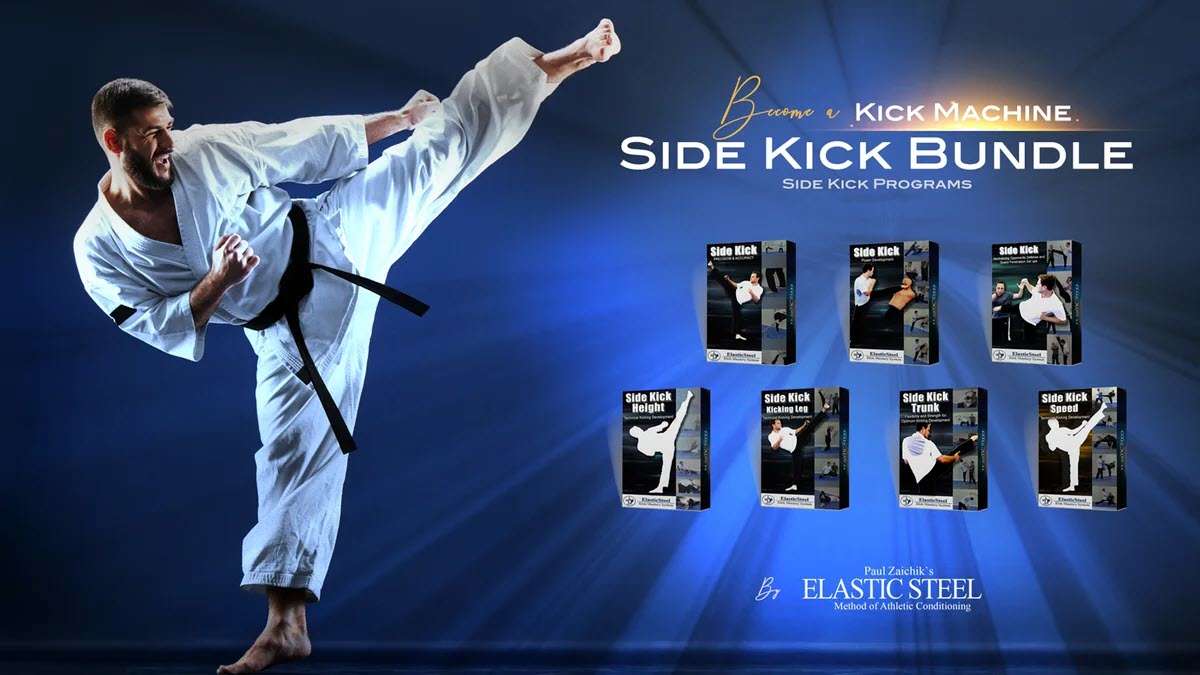How to Avoid Hip Pain During Side Kick and Side Line Kicks - Part 1
This blog will answer the questions about the side kick and hip impingement.
Natural Hip Abduction is about 45 degrees.
- If you don’t move your pelvis, 45 degrees is all you are going to get.
- If you try to force it past 45 degrees you will injure your hip.
This is simple enough.
So how does one throw high kicks and don’t get injured?
The key is to move the pelvis. The kicking side of the pelvis must rise up.
This is the same as shoulder joint and scapula. If you try to raise the arm to the side and over your head, but don’t move the scapula… you will get an injury.
To move the pelvis, the supporting leg must turn out. Abduction of the standing hip must take place in a turned out position. This means that flexibility in the supporting leg is needed.
How much flexibility, depends on how high you want to kick.
For example you want to kick all the way up. A vertical kick.
This is the same as shoulder joint and scapula. If you try to raise the arm to the side and over your head, but don’t move the scapula… you will get an injury.
To move the pelvis, the supporting leg must turn out. Abduction of the standing hip must take place in a turned out position. This means that flexibility in the supporting leg is needed.
How much flexibility, depends on how high you want to kick.
For example you want to kick all the way up. A vertical kick.
- In theory a full open front split would be enough.
- In practice, however doing a split on the ground does not transfer into a full split standing (or end position of the vertical side kick).
Active VS Passive Flexibility
This is because active flexibility is always less than passive one.
So a passive flexibility of an a deep over split is needed to have an active flexibility of a full split.
What about if all you have is a full split?
In that case you need to develop a lot of strength, especially in long range of the muscles of the kicking leg (long range meaning strength, when fully stretched).
MASTER YOUR SIDE KICK WITH OUR SIDE KICK COMPLETE COMBO!
Keeping in mind that the body will drop away from the kick, core flexibility and strength will be needed to bring it back up.
Joints Safety and Health
Both of the factors (supporting leg and core) will prevent pressure from being applied to the hip of the kicking leg. This way keeping the kicking leg safe.
In the next article I will talk about what is preventing people from shifting their pelvis from the kinesiological point of view and how to correct it.
Joints Safety and Health
Both of the factors (supporting leg and core) will prevent pressure from being applied to the hip of the kicking leg. This way keeping the kicking leg safe.
In the next article I will talk about what is preventing people from shifting their pelvis from the kinesiological point of view and how to correct it.
What is the difference between a champions and masters Side Kick and beginner Side Kick? (Roundhouse and Hook Kick too for that matter).
Click on the Picture below to learn about Elasticsteel Side Kick and Side Line Kicks COMBO
© ElasticSteel Corp., EasyFlexibility, Paul Zaichik, et. El., 2022. No part of the materials available through ElasticSteel.com, EasyFlexiiblity.com, site may be copied, photocopied, reproduced, translated or reduced to any electronic medium or machine-readable form, in whole or in part, without prior written consent of Paul Zaichik EasyFlexibility.com, Elasticsteel.com.. Any other reproduction in any form without the permission of Paul Zaichik EasyFlexibility.com, Elasticsteel.com is prohibited. All materials contained on this site are protected by United States copyright law and may not be reproduced, distributed, transmitted, displayed, published or broadcast without the prior written permission of Paul Zaichik, EasyFlexibility.com, Elasticsteel.com.




Comments
Leave a comment